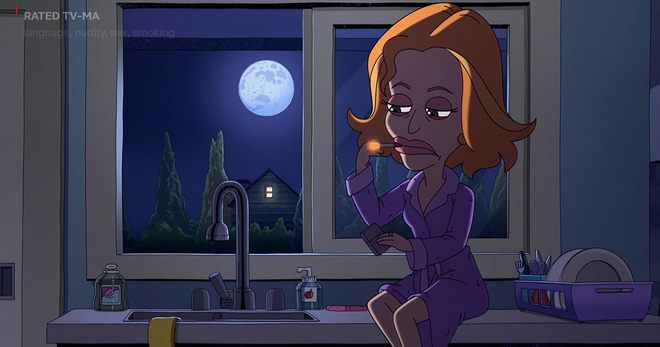4 ways the entertainment industry can protect young viewers and combat youth nicotine addiction
Since Truth Initiative® first sounded the alarm on the prominence of tobacco imagery in popular streaming and broadcast content, the entertainment industry has faced increasing pressure to address smoking and vaping in media popular among young people. While some slow progress has been made, industry leaders must take further steps to protect young viewers from imagery that has been proven to increase youth tobacco and nicotine use. With over 2.5 million middle and high school students reporting e-cigarette use in 2022, the e-cigarette crisis remains a serious threat to young people and we urge entertainment media creators and distributors to take a stand and help dismantle a culture where tobacco use is portrayed as attractive and stylish.
According to Truth Initiative’s fifth annual look at tobacco imagery in entertainment, “While You Were Streaming: Tobacco’s Starring Role,” 60% of the most popular TV shows among 15- to 24-year-olds in 2021 contain depictions of tobacco use, as do nearly half (47%) of top-rated films released in 2021. In addition, top music videos from 2021 – many of which were viewed more than 2 billion times – contain over 200 depictions of tobacco use. Long-established research tells us that young people with heavy exposure to smoking in movies are two to three times more likely to start smoking, compared with youth who experienced less exposure. Now, Truth Initiative research published in 2020 has shown that high exposure to tobacco imagery in episodic streaming media can triple a young person’s odds of starting to vape.
We encourage those who play a role in the entertainment industry to build on recent progress and hold industry leaders accountable when promises are not kept. For example, Netflix took a step in the right direction in 2019, when they pledged to eliminate tobacco imagery from future programming rated TV-14 or below and cut back on tobacco depictions overall. Unfortunately, the platform to date has not made its policy public and continues to include frequent tobacco depictions in shows popular among young people, including the cartoon comedy “Big Mouth” and high school drama “On My Block.”
The youth vaping crisis must be confronted, and the entertainment industry has the power to change the picture for good. Read on for four steps the entertainment industry could take to help combat youth nicotine addiction.
Develop transparent and publicly available policies that combat on-screen tobacco depictions
Distributors of entertainment media must develop transparent and publicly available anti-tobacco policies that limit on-screen vaping and smoking imagery. Furthermore, they must also ensure that content creators are made aware of these policies and abide by them.
Increase awareness and outreach
Streaming companies, creators, actors, and other industry leaders may not be aware of the harmful and potentially deadly effects that tobacco content can have on youth and young adults. With tobacco imagery appearing in 60% of young people's favorite TV shows and 47% of newly released movies, it’s the responsibility of the media and entertainment industry to make sure that decision makers are aware of the importance of keeping all tobacco products out of shows that young people watch. People with far-reaching platforms, such as celebrity actors and influencers, wield a large amount of influence and could make a powerful statement by rejecting smoking and vaping on screens if only they were made more aware of the issue.
Cooperate with restrictions on tax breaks and promotions
Entertainment companies must comply with restrictions that prevent content containing tobacco depictions from qualifying for local tax breaks and other incentives. Furthermore, the industry should ensure that any parties or persons involved with a production are not compensated in exchange for including tobacco depictions in a show.
Include anti-smoking and anti-vaping messages when media does include tobacco use
Much like how streaming companies handle suicide, eating disorders, and other illnesses that affect youth, the entertainment industry should include anti-smoking and anti-vaping messages before and during shows that feature tobacco imagery. By providing viewers with static screen shots that present validated and evidence-based resources to assist youth with nicotine dependence, the entertainment industry can take a big step toward fighting an ever-growing public health crisis.
In a world where youth culture is heavily impacted and shaped by TV and film, which inevitably makes its way onto popular social media platforms such Tik Tok, entertainment media companies should recognize the long-term effects and potential consequences of flooding such media with depictions of a harmful and highly addictive substance. Truth Initiative commends the progress that has come alongside years of increasing pressure from public health organizations, policymakers, and public officials for entertainment companies and creators to do more to address tobacco imagery. However, more needs to be done to make sure these become permanent shifts and that we continue to strive to end the impact and influence of tobacco in our culture.
More in tobacco in pop culture
Want support quitting? Join EX Program
By clicking JOIN, you agree to the Terms, Text Message Terms and Privacy Policy.
Msg&Data rates may apply; msgs are automated.



